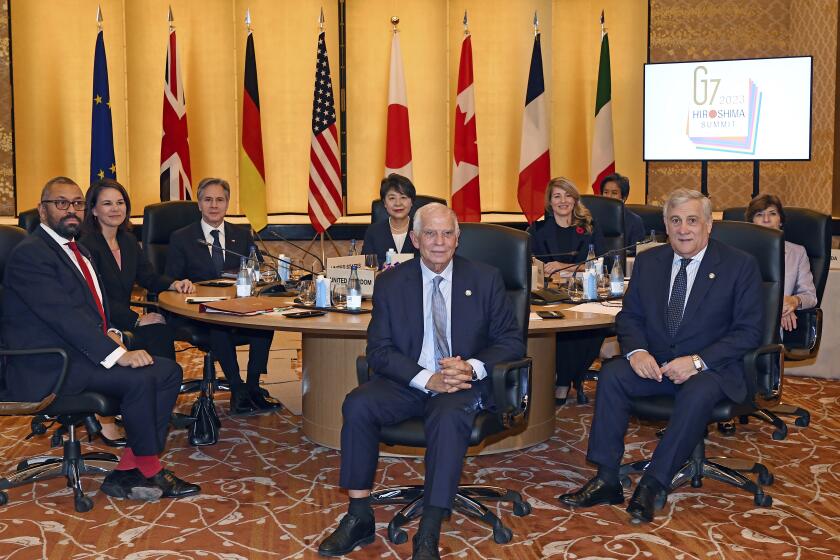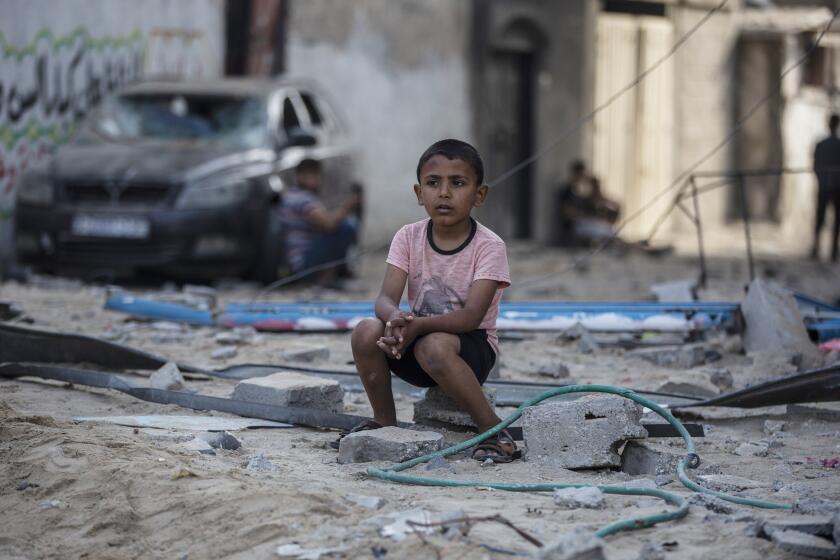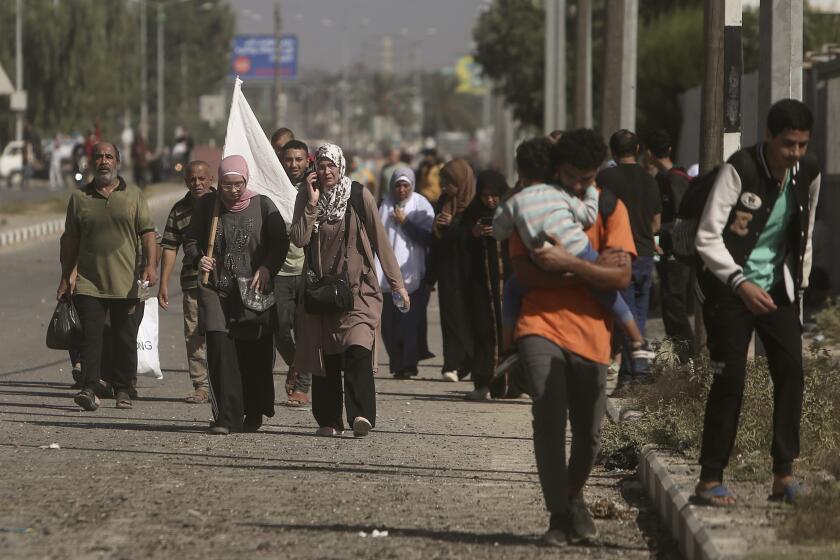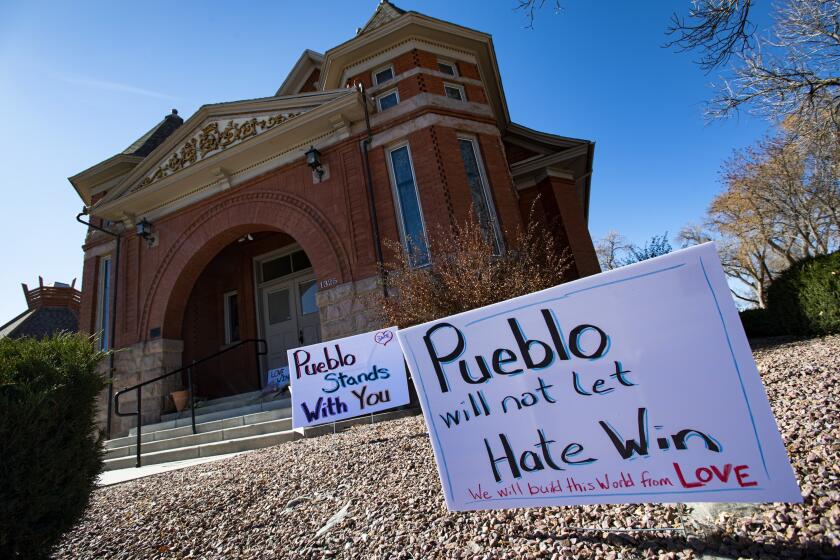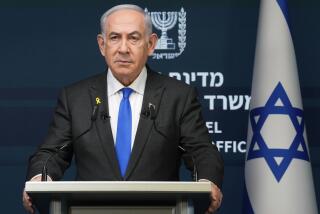Opinion: After a cease-fire in Gaza, there is only one answer for what happens next
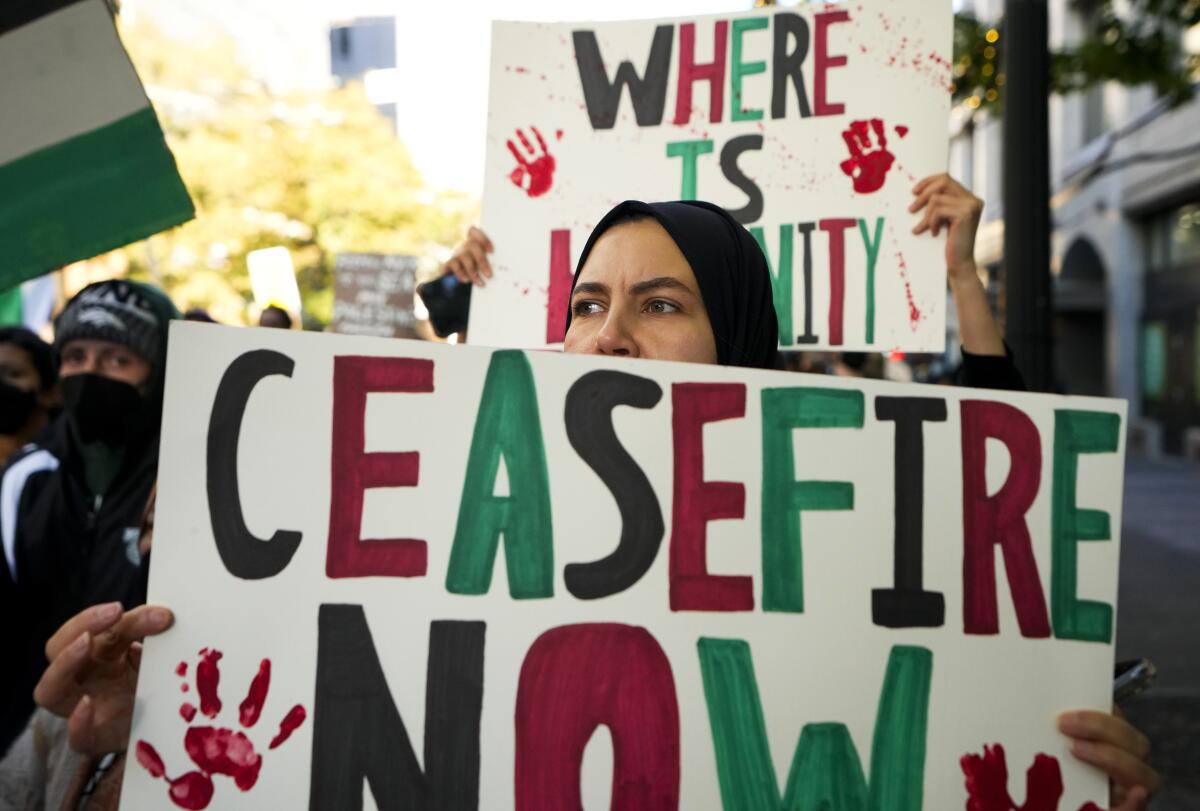
The Americans, the Israelis and the Palestinians are in a bind. No one knows who will govern Gaza after a cease-fire, when it comes. The Palestinian leadership in the West Bank city of Ramallah is not willing to enter Gaza on the back of Israeli tanks and without the agreement of Palestinian fighters there. No one else will either. Jordan’s prime minister has categorically denied that his country would play such a role, and the same will hold for almost any other Arab or international force.
While Palestinian Authority President Mahmoud Abbas told the president of Venezuela that Hamas’ Oct. 7 attack does not represent the Palestinian people, he has also made it clear that he is open to reconciliation dialogue with the political leadership of Hamas. Ironically, given America’s all but total support of Israel, Secretary of State Antony J. Blinken has opposed the idea of prolonged Israeli rule over Gaza and said that Palestinians should govern the Palestinian enclave.
G-7 diplomats unanimously condemn Hamas, support Israel’s right to self-defense and urge pauses in fighting to allow humanitarian aid into Gaza.
This means that the answer for the question of what happens next should be clear. The Palestine Liberation Organization, which doesn’t include Hamas, needs to forge an agreement with Hamas and other Palestinian factions in Gaza.
The PLO’s executive committee, of which Abbas is the current chair, should be expanded to include individuals close to or nominated by Hamas. Similarly, the Palestinian Authority, which rules in the West Bank, should be reconstituted as an expanded emergency national unity government in which all Palestinian factions are part of a collective power-sharing arrangement.
The idea of including Hamas or someone appointed by Hamas to be part of a solution to the current cycle of violence might seem anathema to many, but it is the only effective and logical way forward after a cease-fire. It ought to be demanded by the international community and even by Israel as a means to guarantee the stability needed for rebuilding Gaza and for entering serious negotiations that can produce an independent Palestinian state.
Israel struck the Jabaliya refugee camp in the Gaza Strip Tuesday. Palestinians have experienced a long cycle of displacement within and beyond Israel’s borders.
International diplomacy is full of cases in which groups publicly categorized as terrorist organizations are somehow finessed and accommodated. Whether we look at South Africa’s African National Council, Ireland’s IRA or even the pre-state Jewish underground organizations, all were labeled terrorist, yet they were included in peace talks.
When former Secretary of State James Baker couldn’t get Israel’s hard-line Likud Prime Minister Yitzhak Shamir to accept the participation of Jerusalem Palestinians in the 1991 Madrid Peace Conference, the U.S. agreed to the creation of a steering committee headed by those very Palestinians. The steering committee chose the delegation that did participate in the talks.
On the eve of Sept. 13, 1993, when President Clinton hosted PLO Chairman Yaser Arafat and Israeli Prime Minister Yitzhak Rabin for the signing of the Declaration of Principles (the Oslo 1 Agreement), the PLO was considered a terrorist organization.
Some respite may be in the works, but pauses in violence need to be long and frequent enough to deliver meaningful assistance to civilians in Gaza.
The international community, including Western countries, regularly meets and engages with the Lebanese government, even though the latter has Hezbollah members in its cabinet.
And American officials have found ways to deal with the Taliban despite what happened on Sept. 11, 2001. On July 31, Taliban representatives and U.S. representatives met officially for the first time since the American withdrawal from Afghanistan, with the aim of moving toward recognition of the Taliban government and the unfreezing of Afghan state assets.
A power-sharing Palestinian government would not only govern Gaza along with the West Bank, it would be crucial to the beginning of talks aimed at fulfilling the international consensus that there must be a Palestinian state alongside the state of Israel.
The increased threat posed by jihadist groups dovetails with a huge increase in antisemitic incidents worldwide, especially in Europe.
Despite Israeli hasbara — PR — Hamas’ current charter, amended in 2017, moderates language in the original. While it does not recognize Israel, Hamas leaders have publicly accepted two states, including on Nov. 1 when the group’s leader, Ismail Haniyeh said in a televised address: “We are ready for political negotiations for a two-state solution with Jerusalem as the capital of Palestine.”
The so-called Prisoners’ Document, written in 2006 by the leaders of the main Palestinian faction who were then imprisoned in Israel, sets a road map for such negotiations. In it, Hamas indicated a willingness to have the PLO negotiate for it with Israel, with the stipulation — which seems fair — that any agreement would be put to a vote of all Palestinians.
The idea of an expanded Palestinian government with any hint of Hamas being part of it will certainly be opposed by Israel, but it is a sovereign Palestinian decision that is not and should not be open for negotiation or a veto by any power.
Daoud Kuttab is a Palestinian journalist and a former professor of journalism at Princeton University.
More to Read
A cure for the common opinion
Get thought-provoking perspectives with our weekly newsletter.
You may occasionally receive promotional content from the Los Angeles Times.
